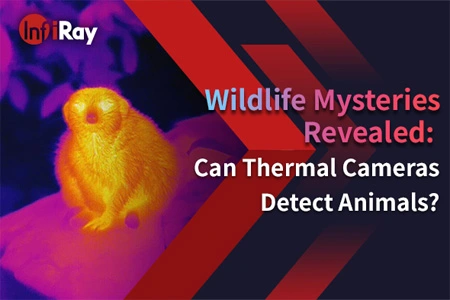Difference Between Thermal IR and Traditional IR

In the realm of Infrared, it is crucial to understand the differences between Thermal IR and traditional IR. There are similarities and differences between these two forms of IR that determine their applications and effectiveness. In this article, we will explain the main differences between Thermal Infrared and Infrared, including their functions and uses.
What is Infrared (IR)?
Infrared (IR) techniques work outside the visible spectrum, using longer wavelengths of electromagnetic radiation than visible light. It has a broad range of applications, from remote device control to medical imaging. IR technology is versatile, finding use in various industries and consumer products.

Understanding Thermal Infrared
Thermal Infrared is different from the traditional IR in both the sensor mechanism and the wavelength. While traditional IR uses an electrical sensor to sense IR, Thermal IR works by using the heat of an object. This special feature enables Thermal Infrared to pick up the heat signature and sense the change in the temperature, which is extremely useful in the fields of night vision, thermography, and the detection of leakage in a building. Extended Reading: How Does Thermal Imaging Work in 3 Minutes

The Key Differences Between Thermal IR and IR
1. Sensing Mechanism:
Traditional IR is used for object detection, whereas Thermal IR technology is used for detecting heat.
2. Wavelength Range:
Traditional IR generally works in the near-infrared and Thermal Infrared in the middle and far infrared.
3. Applications and Use Cases:
Traditional IR is generally applied to applications such as remote control, safety, and communication equipment, while Thermal IR finds applications in heat imaging, night vision, and industry processes requiring temperature monitoring.
4. Facilities and techniques:
Unlike traditional IR, this device is equipped with a special thermal camera and sensor to detect temperature.

Applications and Industries Utilizing Thermal IR and IR
1. Security and Surveillance:
Both Thermal IR and traditional IR are essential components of the safety and monitoring system. Although the traditional IR camera works well during the day, the Thermal Infrared camera is excellent at low levels and offers a clear picture even in total darkness.
2. Medical Imaging:
The use of thermographic IR techniques for medical diagnosis, including inflammation, circulatory disorders, and cancer detection. Traditional IR spectroscopy has also been applied to medicine, for example, to measure the temperature of the human body and to detect anomalies.
3. Environmental Monitoring:
The use of thermal infrared techniques for the assessment of temperature changes, the detection of fires, and the observation of volcanoes. traditional IR sensors are used to predict the weather and research of the atmosphere.
4. Fabrication and Industrial Processes:
Thermal IR is essential for production and industry processes, allowing for noncontact temperature measuring, quality control, and prediction repair. traditional IR sensors are used in automation, machine vision, and process monitoring.

Future Trends
With the development of the technique, we can anticipate more innovations in Thermal IR and traditional IR. New technologies like hyper-spectral imaging and advanced sensor techniques have the potential to revolutionize various industries by providing higher resolution, improved precision, and enhanced functionality.
Knowing the critical distinction between Thermal IR and traditional IR is crucial to choosing suitable techniques for particular applications. Whereas traditional IR provides versatile and cost-effective solutions, Thermal Infrared is good at catching heat signatures and detecting temperature changes. Making use of their respective strengths allows them to increase productivity, increase security, and open up new opportunities for innovation.











